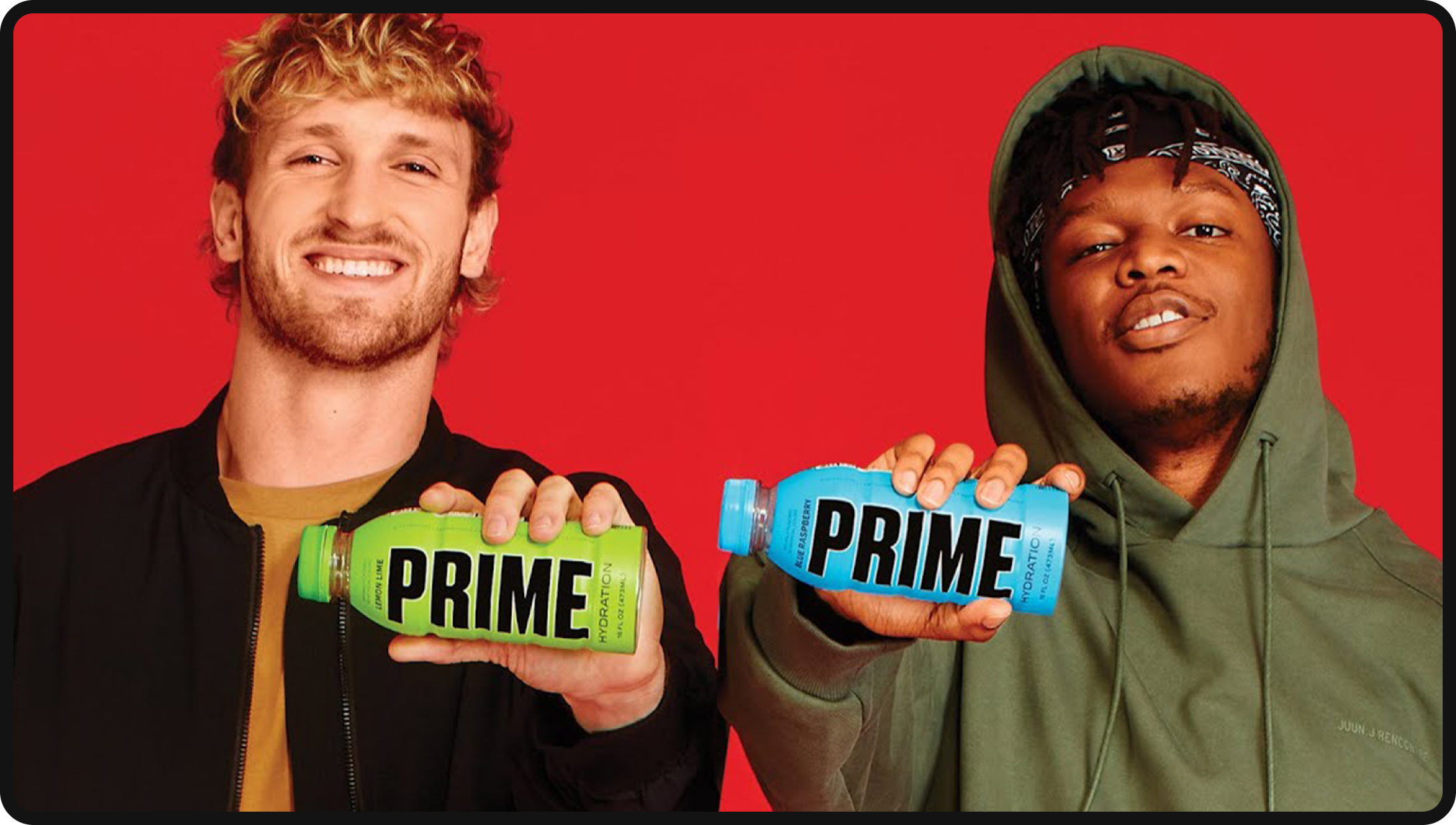The Beginning: Everyone Loves a Good Treasure Hunt
Picture this: it’s just over a year ago, in the more innocent time before the global war of January 2022. Winter has set in, middle school-aged kids running feverishly through the aisle of your local grocery store, shouting to each other while filming their scavenger hunt. “Did you find it? Did you find it?”
What could they possibly be looking for, you’re wondering. And what’s gotten them as excited as a five-year-old in a candy store? It’s clear they couldn’t find what they were looking for.
“Surely this must be the new Pokemon Go,” you and I’m sure millions of others witnessing these mad dashes across the country think to themselves.
Soon enough, these kids are turning to the internet, day traders of a product you’ve never heard of — a product so scarce it can’t be found except on the pixeled pages of eBay or StockX. It’s going for hundreds or thousands of dollars — each new flavor rarer than the last.

It turns out the founders of this viral sensation — the infamous dead-again-born-again Phoenix of YouTube Logan Paul, and controversial at times rapper-slash-boxer-slash-influencer KSI — knew something about marketing that even seasoned MBAs from Wharton forget: scarcity drives demand. And in this case, scarcity drives a brand to be a household name.
What those kids were scouring was soon to become a fixture in every convenience store across America in the span of a year. That product is Prime Hydration.
The Viral Looking Glass of YouTube Influencers
As marketing strategies go in the age of No Secrets and the fear of risk-taking, Prime Hydration stands out. Not insomuch as it relied on traditional over-the-top shock elements of social media channels (think Psy) — or even a viral cause-based campaign (like Bono’s One or Kony 2012). But because its founders tapped into their growing fan base by playing to what makes YouTube work so well: intrigue and gaming. Logan Paul is in the larger shadow of mega-giants like MrBeast — but they bore witness to what made the MrBeast franchise work, drawing in viewers to participate in gamification by rewarding subscribers.
When the drink launched, it had minimal distribution. KSI & Logan Paul had an idea: make their audience (a legion of loyal social media followers) participants in the branding. They would demand it across the retail landscape, scour stores, and put it on sites like eBay. As Marketing 101 will tell you, scarcity also drives up value. And any teenage boy in possession of a Prime Hydration was instantly elevated into the cool stratosphere. Like mindlessly chugging FIJI Water in 2010, the PRIME hydration bottle became a status symbol.
The Means of Distribution
Influencers are not an entirely modern concept, but their presence and scale are unique to our digital age. But social media influencers are not all made alike — and both Paul and KSI stand out in a few key areas; here are marketing strategy examples:
- Serialized Content Creators
Paul routinely crafted and created video content that kept his viewers coming back weekly (or monthly), depending on the schedule. Actors and actresses with brands typically rely on studios to get their name out to the public; an actor with a CPG company must still be in film or TV to get a recurring audience. But these eventually (or inevitably) are on a schedule. What’s a marketer’s dream? Constant, sustained advertising. What did Paul and KSI have for Prime Hydration? Essentially their very own TV station — their YouTube Channels — capable of sustaining marketing pushes. Their ability to market their product wasn’t hampered by a TV show or film’s schedule; they could market it as often as they wanted. And they did just that to the combined 40 million plus subscribers. And every video gets a scale of 2M+ views. Not bad.
- Controversy Drives Interest
Most brands and influencers shy away from controversy like it’s 2020 COVID. Paul and KSI, however, understand that infamy breeds interest which breeds traffic which in turn can bring in sales. As a marketing strategy, controversy can and is harnessed by the pair who make good use of the algorithm. Like Paul taking swings at his opponents, they beat up the algorithm in their favor, utilizing clickable headlines and beefing with other equally famous YouTubers to add subscribers, which in turn allows them another chance to market the product.
- A Product-Market (and Influencer) Fit
Many celebrity brands attempt to foster a phony or inauthentic connection to the celebrity and the brand (think: Britney Spears and a cajun restaurant — yes, this is real). But Paul and KSI went straight for the jugular with their brand — an energy drink with a high level of caffeine, targeted straight to the buyers of these drinks: young men. What was better? Both men were essentially believable buyers of the product — athletes who would ostensibly need a dose of caffeine to keep going, whether in the ring or in the editing room. A marketing strategy example of a product-market fit made in heaven.
Let’s Talk Revenue
If any marketer or business out there is still wondering, “Does influencer marketing really work?” Well, Logan Paul and KSI have 250 million answers for you — in dollars, that is. In fiscal year 2022, the pair’s Prime hydration drove an estimated $250 million in retail sales, with a $100 million in gross. As it stands now, the company, with its five flavors including tropical punch, orange mango, and strawberry watermelon, now competes with the likes of Gatorade and Powerade in a multi-billion dollar market, taking market share away from up-and-comers and nearly eradicating the competition.
Why this Works: The Growth Loop Word of Mouth
Logan Paul and KSI might be modern-day influencers, but their method is as old as time. Back before the days of metadata, cell phones, and digital currency, there was a little thing called word of mouth. Word of mouth is the reason why we have Tupperware, why we have Jack Daniels – decades and century-old brands that relied on the “trust your neighbor” approach to products.
We can think of this in three simple phases: overhear, buy & try, evangelize
In the case of Prime Hydration, we see word of mouth (or digital word of mouth) resonate with more speed than COVID at a super-spreader event. Don’t believe me? Here’s the at-home rapid test:
- Overhear: The product is bought NOT through paid media channels like IG (post an ad, watch it run) but rather through some means of hearing about the product, either virally or digitally. Kids who bought Prime Hydration heard about it on social channels, saw their friends drink it at school – or even watched a Logan Paul influencer-laden video. “I must have this product that I’ve heard so much about, and it verily must be the bee’s knees” (how I imagine a 12-year-old thinks). Which leads to:
- Buy & Try: Well, this is a no-brainer – all that chatter leads to (a parent’s) hard-earned dollars being shelled out to buy this magnificent new wonder juice. And – because they are so hyped already – they try Prime Hydration. It’s an instant validator. The consumption of such beverages elevates the drinker to soaring heights (in many cases, literally due to the caffeine). All of this can’t go to waste, which leads us to:
- Evangelize: The new consumer becomes the connoisseur, and any good connoisseur is an evangelist. Soon enough, the kids are shouting on the digital rooftops (which means TikTok videos, IG posts, and other assorted digital posts). They are spreading the Prime Hydration gospel to the next consumer, which leads us back to the cycle of (1) above.
What makes this loop work? It’s elementary, really – it’s how societies and empires formed (and really, doesn’t Logan Paul have a mini-empire?) The association with a group or product brings validation to the user, setting them apart but with a communal belonging, widening the audience and, thereby, the purchaser. Make no mistake, though – purchase is indeed the end game. It just comes about with much more fervent fervor and ardent support than an ad click.
Where Do We Go Now?
As the great Axl Rose asked, “where do we go now?” so, too, do Logan Paul and KSI ask where do they take their brand. It’s now larger than they are, in many respects — a brand that has outgrown the already monolithic personalities of their creators. And really, isn’t that what all creators would like — to see their creations outlive them?
Paul and KSI created Prime Hydration utilizing the power of their name IDs and their genius around social engagement to hype and get their product into the hands of millions – but what comes next is more difficult — and telling about its longevity.
Already the brand is under legal scrutiny for its caffeine content – which is claimed by the litigants to have the equivalent of five servings of coffee in one can. And that this product is marketed explicitly to children.
Such is the price to pay for a hundred-million-dollar success. Paul and KSI have established their abilities as marketers and businessmen, but the next step is to, in year 2, take the product from fad to staple. How? Well, marvelous readers: that’s a blog for another time…






